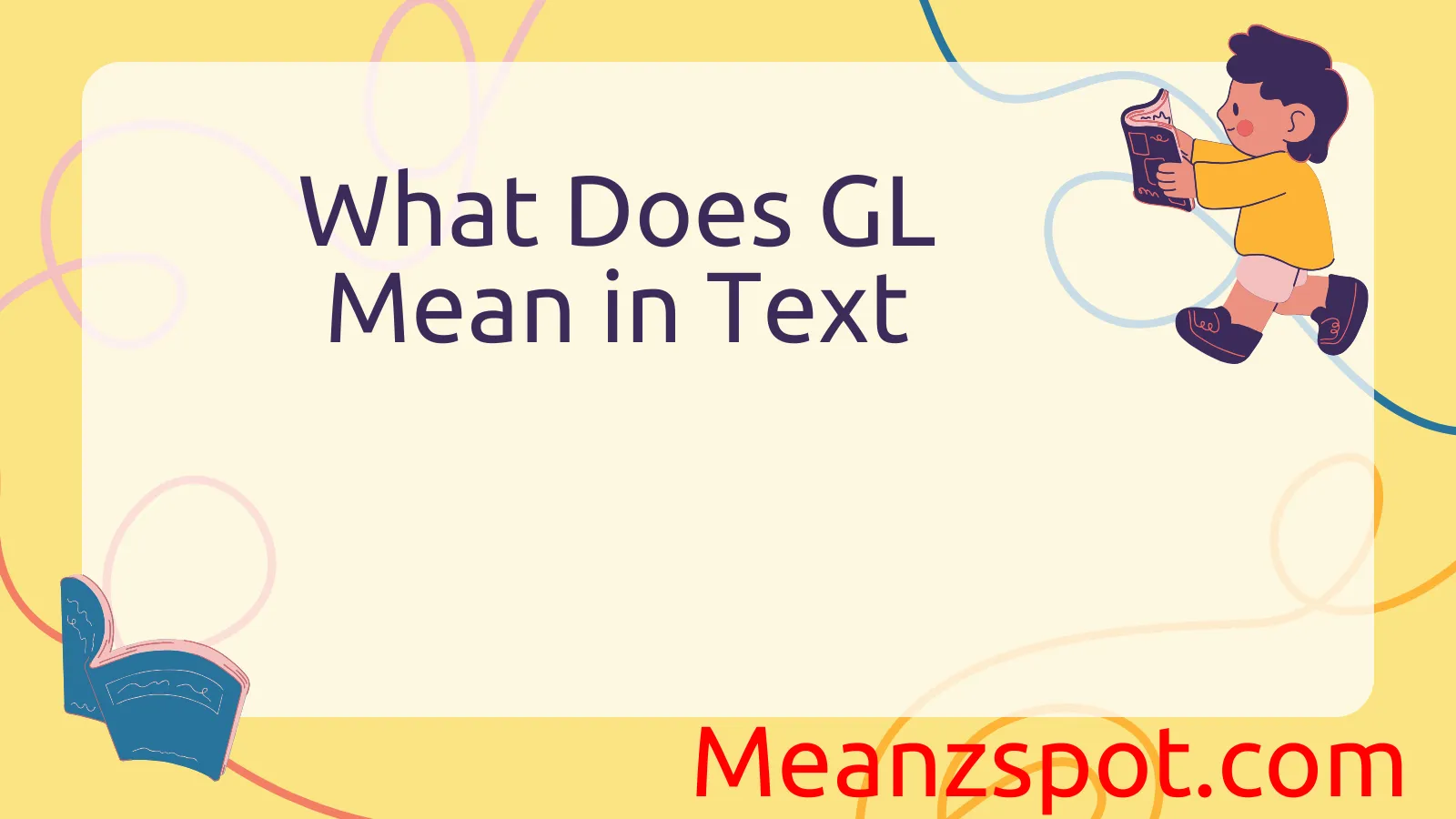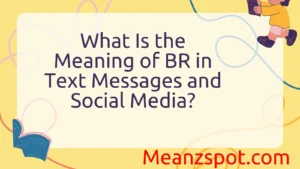In today’s fast-paced digital world, texting abbreviations and internet slang evolve faster than ever. Whether you’re chatting with friends, gaming online, or navigating social media, you’ve probably seen the abbreviation “GL” pop up—but what exactly does it mean? Understanding these short forms is essential for keeping up with conversations and avoiding misunderstandings.
GL is one of the most common acronyms you’ll encounter, especially in gaming communities and casual messaging apps like WhatsApp, Discord, and Snapchat. This guide dives deep into the meaning of GL, its origins, popular uses, and why it matters in today’s online communication.
By the end, you’ll be confident about when and how to use GL like a pro—and maybe even impress your friends with your savvy texting skills. Let’s unlock the secrets behind this simple yet powerful two-letter acronym!
Definitions & Meaning
“GL” is a widely used abbreviation in digital communication that stands for “Good Luck.” It’s typically used to wish someone success or express support, especially before they embark on a challenge, task, or event.
For example:
- Text Message: “Big test tomorrow? GL!”
- Gaming Chat: “We’re about to start the match. GL, everyone!”
It’s considered a polite and encouraging gesture, similar to saying “break a leg” in theater or “you got this” in casual conversation. “GL” is informal but positive, often paired with other expressions like “HF” (Have Fun) to become “GLHF,” especially in competitive or gaming environments.
Despite being short, the meaning is universally understood across many online platforms. It’s commonly used in lowercase (“gl”) or uppercase (“GL”), with both forms meaning the same thing and the choice depending on user preference or platform style.
Origins & History
The use of “GL” in text and digital communication dates back to the early days of internet culture, particularly within online gaming communities and early instant messaging platforms like IRC (Internet Relay Chat) and MSN Messenger.
In competitive gaming environments—especially in games like StarCraft, Counter-Strike, and World of Warcraft—players would say “GL” at the start of a match as a sign of sportsmanship. The phrase “GLHF” (Good Luck, Have Fun) became a standard greeting before gameplay began.
Over time, this abbreviation expanded beyond gaming. As internet culture grew and acronyms became commonplace in texting and social media, “GL” found its way into general use. It transitioned from a niche gaming term to a widely understood expression in everyday digital conversations.
Its roots in promoting friendly competition and positive interaction have remained intact, which helps explain why it continues to be popular today. The simplicity and brevity of “GL” made it an ideal fit for platforms with character limits like Twitter and SMS.
Usage in Different Contexts
“GL” is a versatile term used in various online and offline contexts. Here are some of the most common:
1. Online Gaming
The term “GL” is perhaps most prevalent in gaming culture. Players often type “GL” or “GLHF” at the beginning of a match to set a friendly tone, even in competitive environments. It reflects good sportsmanship and mutual respect, even among rivals.
Example:
- “glhf!” – Sent at the start of a League of Legends match.
2. Social Media
On platforms like Twitter, Instagram, and Reddit, users might use “GL” in comment threads or posts to wish someone well with a challenge, announcement, or life event.
Example:
- “Just submitted my application for med school! 🤞”
- Comment: “GL! Hope you get in!”
3. Professional & Academic Settings
While slightly informal, “GL” might be used in casual professional or academic communication—especially between colleagues or classmates who are familiar with each other.
Example:
- “GL on your presentation today!”
4. Text Messaging
In one-on-one or group texts, especially among friends, “GL” is a quick and easy way to show encouragement.
Example:
- “Heading into my driving test now.”
- “GL! You’ll do great!”
5. Pop Culture
“GL” occasionally appears in memes, fan discussions, or pop culture commentary to sarcastically or earnestly wish someone luck.
Example:
- “GL surviving that Game of Thrones finale!”
Common Misunderstandings & Clarifications
Despite its simplicity, “GL” can sometimes be misunderstood, especially by those unfamiliar with internet slang or new to online communities.
1. GL Doesn’t Mean “Girl”
Some might assume “GL” is shorthand for “girl” due to phonetic similarity. However, this is incorrect in most contexts. The abbreviation for “girl” is typically just “grl” or written out.
2. Tone Matters
While “GL” is generally friendly, tone can vary. In sarcastic or trolling contexts, “GL” can come off as dismissive. For example, someone might say “GL with that…” to imply a challenge is too difficult.
3. Not Always Appropriate for Formal Use
In professional emails or formal communications, using “GL” can appear too casual. It’s best reserved for informal settings unless you know the recipient is comfortable with text shorthand.
4. Confusion with Similar Abbreviations
Some people confuse “GL” with:
- “GG” – Good Game
- “GF” – Girlfriend or Good Fight
- “GN” – Good Night
Knowing the context helps clarify the meaning.
Alternatives & Synonyms
If you want to express the same sentiment as “GL” but with a different phrase or tone, here are some alternatives:
- Full Form: Good luck! – Direct and always appropriate.
- Break a leg – Used often in performing arts or high-stakes moments.
- You got this – Informal and very encouraging.
- Best of luck – Slightly more formal.
- Fingers crossed – Friendly and optimistic.
- Wishing you well – Polite and supportive.
In gaming, “GLHF” (Good Luck, Have Fun) is a more comprehensive version that also encourages enjoyment, not just success.
Frequently Asked Questions
1. What does GL stand for in texting?
GL stands for “Good Luck.” It is used to wish someone success or express support.
2. Is GL only used in gaming?
No, while it originated in gaming, it’s now widely used across social media, texting, and other informal communications.
3. Can I use GL in professional emails?
Generally, no. “GL” is too informal for professional or academic emails unless you’re close with the recipient.
4. What does GLHF mean?
“GLHF” stands for “Good Luck, Have Fun.” It’s a common phrase used in online gaming to promote friendly competition.
5. Is it okay to say GL sarcastically?
Yes, but be cautious. Sarcasm can be misinterpreted in text, especially without additional context or tone indicators.
6. Does GL mean “girl”?
Not usually. While someone might interpret it that way, “GL” overwhelmingly means “Good Luck” in text and online settings.
7. Are there regional differences in how GL is used?
Not significantly. It’s widely understood in English-speaking digital communities worldwide.
Conclusion
The abbreviation “GL” might seem minor, but it plays a significant role in online and text-based interactions. Its simple yet powerful message of support makes it a popular choice across various platforms—from gaming to texting and beyond. Understanding its meaning, context, and appropriate usage can enhance your digital communication and help you connect more effectively with others.
As online language continues to evolve, abbreviations like “GL” remind us how efficiency and empathy can go hand in hand. So the next time someone’s facing a challenge or heading into something big—don’t forget to wish them a quick “GL”!



